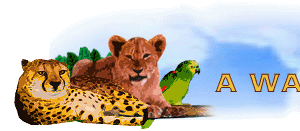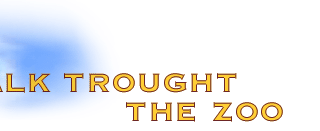|
A map of the ZOO

The Brno ZOO wants to create a beautiful and attractive environment for its visitors; this should serve not only to its basic educational mission but also for recreation and leisure time of its visitors. For that reason, an extensive reconstruction has been started recently. The reconstruction of pens and hideaways for large beasts of prey, i.e. tigers and leopards, is one of the first actions of this type. It has been started in 1997 and will be finished to the 45th anniversary of the establishment of the Brno ZOO in 1999.

A map of pens for tigers and leopards (45 kB)


In contradistinction to small cats, these beasts of prey have not a fully ossified hyoid bone. This enables them to produce a rumbling roar. Their pupils are always rounded and hair cover reaches as far as to the edge of their nose. In the Brno ZOO, there are altogether five species of big cats - Sumatra tiger, Berberian lion, jaguar, Ceylon leopard and gepard.





Small cats have a fully ossified tongue bone and for that reason they are not able to roar. Their typical voice is therefore purring. When exposed to more intensive light, their pupils contract to form small slots and the whole top of their nose is without hairs.






In the Brno ZOO one can find representatives of altogether five families of the suborder terrestrial predators, viz. Felidae, Canidae, Ursu... In the course of their evolution, predators acquired some specific traits which distinguish them from all other mammals. Above all, this concerns a characteristic adaptation of their dentition, excellent senses and extreme briskness and speed which enable them to trace and catch their prey. However, not all predatory species are strict carnivorous; some of them are omnivorous and some even herbivorous.






Members of these two orders represent typical carnivores among birds. Birds of prey are characterised by their strong legs with sharp claws, curved beak and large eyes. Night activities and many adaptations for hunting at night are typical for owls. They have an excellent sense of hearing, soft feathers enabling them a noiseless flight and large eyes in their flat face.





Parrots are well-known especially because of their colourful feathers. However, they have also other, for them very characteristic traits, e.g. a strong, stump and curved beak, the upper part of which fits exactly to its lower part so that these birds can crack very hard seeds and nuts. A leg with two fingers directed forward and two backward is another typical trait of these birds and enables them to be excellent climbers as well as to deliver food into their beaks.






Besides birds of prey, owls and parrots, there are also other orders of birds in the Brno ZOO, for instance members of the order ... Its representatives have a relatively small head and strong legs with stump claws adapted for clawing. In the caudal part of their legs, especially of males, there is often a long, horny spur which is sometimes strengthened with bone. Males have often colourful feathers while females are inconspicuous.




In 1998, the reconstruction of the right wing of our terrarium has been started. After its finishing, this pavilion be an ideal environment for a collection of representatives of tropical fauna, above all of various species of reptiles. The reconstructed wing of our vivarium will be officially opened on the International Day of Children. This means that at present only the left wing of our vivarium with crocodiles and big snakes is accessible to wider public.

The plan of vivarium reconstruction ( 48 kB)



The order Primates involves two suborders, viz. lower primates (half-apes) and higher primates (apes). The characteristic traits of primates are as follows: adaptation to the life on trees, mainly daily activities, improved eyes with three-dimensional vision, reduction of olfactory structures, adaptation of legs for climbing and grasping, presence of nails instead of claws on at least some fingers, big brain enabling an advanced social behaviour and advanced adaptive behaviour, i. e. learning.







This order was named on the base of morphology of legs of its members. They have either three or only one functional mesaxonic foot which is protected with a strong, horny hoof. Their dentition consists only of upper and lower incisors so that they are able to bite grass. Today's 20 species that live in small territories of South America, Africa and Asia represent only a small part of former abundance of this order.





Members of this order have two or four fingers on their extremities. In the major part of these species, upper incisors are reduced so that they do not bite but pluck grass using also their long and strong tongue. This order shows a wide variety of species that live in very different environments from tropical to polar territories on all continents with the exception of Australia and Antarctica.





The Brno ZOO is situated in the city neighbourhood on the MniÜφ hora mountain. Its hilly terrain creates ideal conditions for rearing mountain animals. Some species, for example members of the order Artiodactyla are well adapted, both by their body structure and behaviour, to movement on rocks and life in rough mountain climate.





In 1980, a common large pen and shelters for African animals, i.e. the so-called "safari", was built up. This is an ideal example of environment in which several species live together under similar conditions as in wildness. In the Brno ZOO, the Safari provides free range for ungulates from African savannah. Zebras, giraffes and ...move freely together with ostriches.






| 


